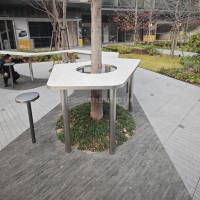Welcome to the website for landscape facilities products and knowledge.
What are the best joinery techniques for resin landscape trash bins?
When constructing resin landscape trash bins, selecting the right joinery techniques is crucial for durability and aesthetic appeal. Resin bins are often exposed to harsh weather conditions, so the joints must withstand moisture, temperature fluctuations, and heavy use. Here are the best joinery techniques to consider:
1. Dovetail Joints: Ideal for strength and longevity, dovetail joints interlock tightly, preventing separation over time. They are perfect for corners where rigidity is essential.
2. Mortise and Tenon Joints: A classic woodworking technique, mortise and tenon joints provide excellent stability. They work well for attaching horizontal supports to vertical panels in resin bins.
3. Pocket Hole Joinery: Using screws and angled holes, pocket hole joinery is quick and effective for assembling resin bin components. It’s great for hidden fasteners and easy repairs.
4. Finger Joints: These interlocking joints increase glue surface area, creating a strong bond for resin bin panels. They are especially useful for lightweight designs.
5. Dowel Joints: Simple yet robust, dowel joints align pieces precisely and add reinforcement. They are a good choice for modular resin bin designs.
For added weather resistance, seal joints with waterproof adhesives and consider stainless steel or corrosion-resistant fasteners. By choosing the right joinery technique, your resin landscape trash bins will remain functional and visually appealing for years.
Related search:

Recommendation
An outdoor bar counter with stainless steel and terrazzo materials in an irregular shape